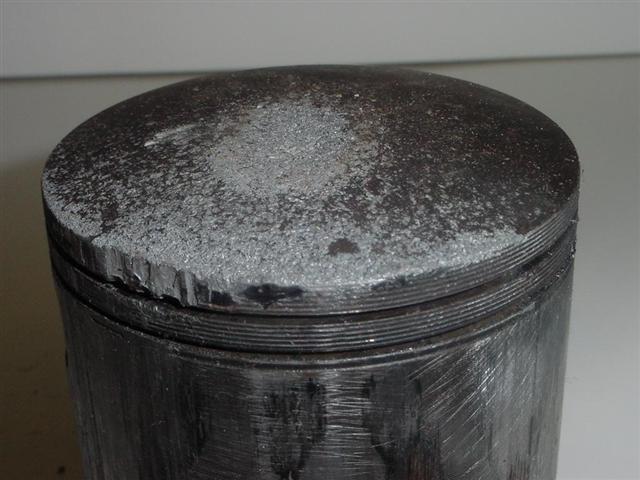
© Geoff Battick
We settled on a Motoplat very quickly, after trying a total-loss system initially. Points can be made to work well, but the amount of maintenance is more than I want once I'm at the track. For a street bike they are fine. I ran them for years. It was kind of fun to check the timing once a month or so with my little home-made buzzer. That way I could keep both eyes on the timing marks and not have to try and be eyeballing an ohmmeters needle at the same time.
Points are easy to change and maintain (if you're not in a hurry) and are cheap. I have also installed a Pirhanna ignition on an R5, and that system seemed to work fine. Just do not ride the bike with the points cover removed, as the sunlight will throw off the optical pick-ups and cause the motor to quit.
Both of those systems require a battery, which is something I do not really want on a dead-serious race bike, but is OK if you are just out to have a lot of fun on the track and are not chasing points.
If you do try a total-loss system you can lighten the stock rotor substantially by removing all the windings and the iron "claws" that wrap around them. Just clamp the thing in a vice and bash 'em with a hammer until the claws dislodge, then hacksaw off the windings. You can go a step further and have what is left turned down on a lathe, leaving just the centre section that holds the points cam. This is a good idea, as the weight loss will aid crank life and be one less amount of mass that needs to be spun by the engine.
If you want a race only bike and no hassles at all with the ignition, find a Motoplat, or one of the newer CDI systems out there now. It may take some searching to find one though. . All you have to do once a CDI is installed is set your timing where you want it and never touch the thing again. Ever. Your bike will start easily and rev as high as you can spin it. I will add this, that with a good ignition and proper jetting even a real rowdy RD should start easily.
My bike would start with one kick, and once it was warmed up, I can could it with my hand on the kick lever (keep the pinch bolt loose so you can remove the lever once it starts) just to psyche out those guys who have to push and push all over the pits, wearing themselves out and spiking their heart rate before they even get on the track. I am always amazed at race RD's that still use the stock carbs but need rollers or 50 feet of pushing to get them to fire. Something is wrong if you need to do that with stock size carbs.
Set your timing at 1.8mmBTDC. You can experiment and try 2.0mm on a tight track if your jetting is good and you have the correct heat range plugs installed as you might find a small boost in mid-rpm power. You can also try a little later timing like 1.65-1.7 if you are at a big track like Daytona and want a little higher revs on the straight. But I usually just set it at 1.8mm and forget it. The ultimate set up would be an ignition with a programmable curve so you would have both the high (2.0mm btdc) and mid (1.8mmtdc) rpm timing you need and not a compromise setting like we have now.
TZ's did this way back in the late '70's in a crude fashion. Too bad our little special interest does not merit enough sales potential for somebody like DYNA to build one like that with modern electronics. They did it for the drag guys old KZ's and GS's. Maybe a clever person could adapt one from one of those bikes to work on an RD. It has been done with the plain vanilla old DynaS ignitions before. If anybody has done this let me know PLEASE !.

The dome of this piston has been eroded by detonation. The edge of the dome facing the exhaust port has been damaged by the resulting heat too. This piston seized during a practice. Too much ignition timing and/or lean jetting will do this.

|
 |
|
|
|